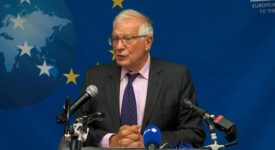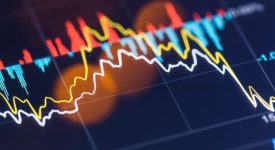The EUR/USD exchange rate dropped sharply on Thursday (Nov. 7), as the European Central Bank unexpectedly cut rates by 0.25% at its policy meeting. The European Central Bank has been facing pressures to decrease the eurozone’s inflation rate. It is the biggest ‘stress period’ for the ECB since it cut inflation to 0.5% in May this year. This time, however, ECB governors are waiting to see whether markets can sustain the dive in inflation. In October, the rate of inflation was just about 0.7 percent, well beyond ECB’s target of 2%.
According to the insiders, the ECB Governing Council has been divided into three groups, each of them lobbying for a different solution. One stream wanted to see the possibility of another round of long-term loans to banks open, the second group preferred another interest rate cut, while the last group was ready to sit this cut out. Observers agree that the central bankers have felt themselves in the situation where not much can be done about the rates anymore. Instead, they could have also opted for adding additional liquidity to the markets, which would be basically a substitute for a rate cut.
The ECB’s decisions on inflation and interest rates are being closely observed by European politicians. Reportedly, French industry minister and Italian finance minister have been calling for easing their policies with the objective to strengthen the common currency. Yet, the ECB has respect for its own independence, and the politicians are very likely to be ignored at least until more forecasts have been available.
The Central Bank’s researchers are currently preparing prognoses for next year, which are due to be published in December. The forecasts are believed to help the Council decide when and where to use the rate strategy. Some believe, that rates should be moved only when nothing else is left except for non-conventional measures, which are generally much more difficult to agree on. In any way, the ECB has already promised to keep present key rates at rather low levels for a longer period of time.
Article Categories:
ECONOMY & TRADE






